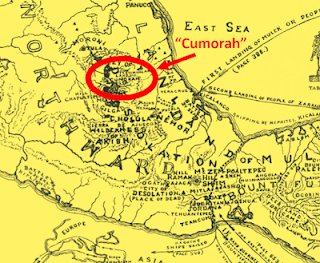There is an ongoing archaeological project in Nauvoo called I Dig Nauvoo. The website is here:
https://idignauvoo.legacyshare.org/
This summer they’re focusing on the site of the original Times and Seasons printing shop.
Steve Pynakker at Mormon Book Reviews did a fascinating interview with Paul DeBarth, who explained the project.
https://www.youtube.com/watch?v=HvFvrEbD2ro
_____
Regular readers of this blog know the significance of the Times and Seasons in both Church history and the question of Book of Mormon historicity. In 1841, Joseph’s brother Don Carlos was the editor of the Times and Seasons. Joseph gave him Oliver Cowdery’s eight essays to republish, which Don Carlos did. The portion of Letter VII that explains the fact that the Hill Cumorah is in New York was published on April 15, 1841. It is available at this link or anywhere you can find the Times and Seasons (search for “Cumorah” on the page):
http://centerplace.org/history/ts/v2n12.htm
At about one mile west rises another ridge of less height, running parallel with the former, leaving a beautiful vale between. The soil is of the first quality for the country, and under a
(page 378)
state of cultivation, which gives a prospect at once imposing, when one reflects on the fact that here, between these hills, the entire power and national strength of both the Jaredites and Nephites were destroyed.
By turning to the 529th and 530th pages of the book of Mormon you will read Mormon’s account of the last great struggle of his people, as they were encamped round this hill Cumorah. [It is printed Camorah, which is an error.] In this valley fell the remaining strength and pride of a once powerful people, the Nephites-once so highly favored of the Lord, but at that time in darkness, doomed to suffer extermination by the hand of their barbarous and uncivilized brethren. From the top of this hill, Mormon, with a few others, after the battle, gazed with horror upon the mangled remains of those who the day before, were filled with anxiety, hope, or doubt.
In March 1842, Joseph published the Wentworth letter, which rejected Orson Pratt’s speculation about Central America with the simple declaration that the remnant of Lehi “are the Indians that now inhabit this country.” http://www.lettervii.com/p/wentworth-letter-vs-orson-pratt-pamphlet.html
In 1842, Joseph referred to the Hill Cumorah in a September letter that was later canonized as D&C 128:20.
Also in 1842, anonymous editorials in the Times and Seasons speculated that ruins in Central America were related to the Book of Mormon. These articles were attributed to Joseph Smith in one of the biggest mistakes in Church history. Joseph promptly resigned as the nominal editor of the newspaper.
Much later, RLDS scholar L.E. Hills developed the Mesoamerican/two-Cumorahs theory (M2C) to explain how the setting of the Book of Mormon fits in Mesoamerica. He simply ignored/rejected what Oliver and Joseph had taught about the New York Cumorah. Hills published his map in 1917.
Later LDS scholars, including John Sorenson and Jack Welch, agreed with Hills, rejected the New York Cumorah, embraced M2C and published similar maps.
Professor Welch incorporated M2C into the FARMS logo by using a Mayan glyph to represent the Book of Mormon. He brought the logo over to Book of Mormon Central, which spends millions of dollars to convince young Latter-day Saints that the prophets were wrong about Cumorah.
Source: Book of Mormon Concensus



